The return of the Soviet interplanetary station. Preliminary forecast

First, a brief thesis.
The Soviet station, unsuccessfully launched to Venus, after half a century of wandering in space, will fall to Earth in the coming years.
Who are interested, please under the cat.
On March 27, 1972, the station Venera-8 went into space. At first, it was put into a low reference orbit, about 200 km high, after which the acceleration unit L turned on and the station went to Venus. At that time, in the class of Venusian stations, it was our most advanced station.
After 4 days, on March 31, an attempt was made to launch her twin. At first everything is fine, the carrier brought the station into the reference orbit, and the upper stage was launched at the estimated time.
It soon became clear that this deduction was non-standard. The overclocking unit turned off earlier than necessary. The station along with the upper stage remained in the extended orbit of the Earth satellite.
After that, the station received the number "Cosmos-482" and quickly forgot about the station. Especially on the interplanetary trajectory, her more successful "sister" flew. "Venus-8" really became world famous. Since it was she who, after landing on the surface of Venus for the first time in the world, transmitted scientific information about its surface.
Although Cosmos-482 recalled itself at the beginning of April 1972. Farmers from the small town of Ashburton in New Zealand saw several meteors in the sky. Having reached the place of their fall, they found 4 hot hollow spheres with a diameter of 38 cm and a mass of 13.6 kg each.
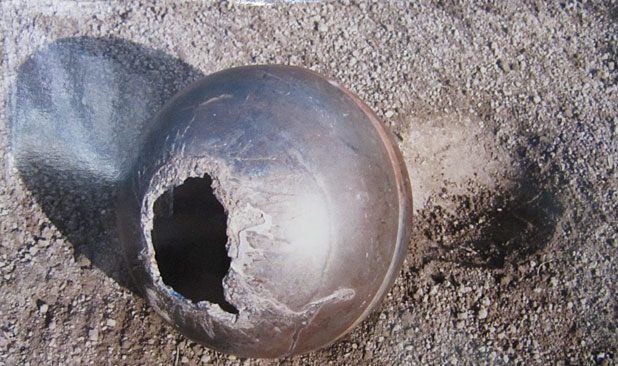
Here you can read the memories of those who found them.
“We thought it was a joke on the first of April. Then the police came and took the ball. They treated him with great caution, as they were afraid that he was radioactive. They took him to the prison in Ashburton and locked him up for the night. ”
The police handed the balls to the study. Because of the used brands of titanium and its high-tech welding, it was determined that the balls are Soviet. But since the Soviet Union did not claim them, the balls were returned to the farmers that they were found. Now one of those balloons can be seen at the Ashburton Aviation Museum.
Here it should be noted that these balls were not related to the station itself. These were the details of the block for starting the acceleration block. They are located on the farm, which is dropped immediately after launch from the Earth's orbit. In this diagram, it can be seen at number 7. The required balls are also visible. They really made from titanium.
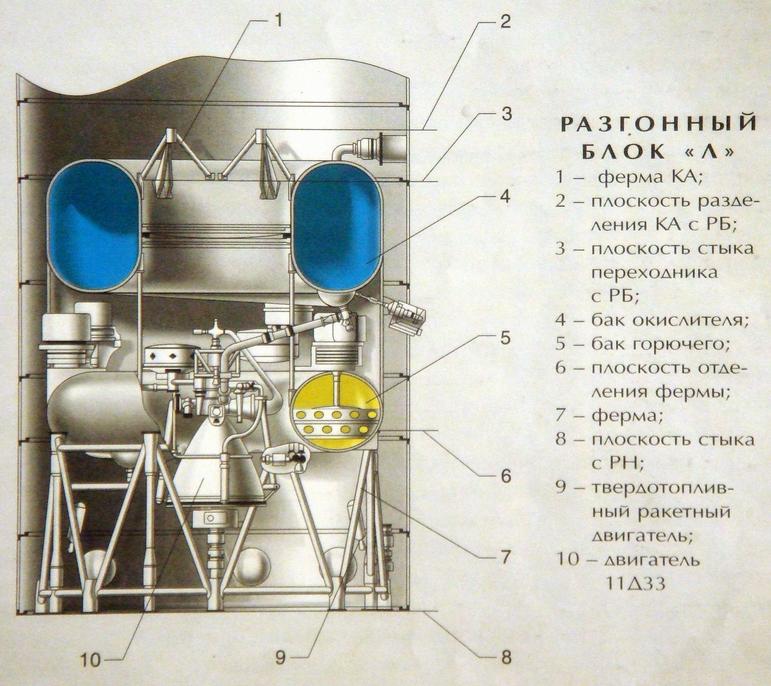
The station itself, together with the upper stage, remained in orbit with the parameters of 220x9800 km. For some reason, the upper stage worked for about 100 seconds, out of three minutes. Maybe there was an accident, maybe just put the wrong value in the timer. Not exactly understand. Then, to increase the payload, telemetry was removed from the upper stage. This was the last case of AMC loss in the USSR due to the upper stage. The next such station was the Russian "Mars-96".
And it should be noted that it was initially clear that the station will return to Earth. But this, with respect to the launch date, will happen in tens of years.
Even when I wrote "Venus", I remembered this story, but there was no time for exact analysis. As a result, I returned to the station only recently, when I was preparing material for reprinting my book. I wondered how long we had to wait until the station returned to Earth. And it turned out that not so much.
This is really interesting. The fact is that at this station, a very strong descent vehicle. One of the strongest in history, sent into space. It is able to withstand an atmospheric pressure of 100 atm. It is designed to enter the planet’s atmosphere at the second cosmic velocity, with peak overloads up to 300g.
When the station enters the atmosphere of the Earth there will be much milder conditions. As a result, the device to the surface of the Earth is guaranteed to reach. Moreover, even if it sinks, it will be able to withstand the pressure of water at a depth of a kilometer.
For the analysis, the so-called two-line elements (two-line element set, TLE) were analyzed, which gives the command of the US aerospace defense (NORAD) for objects flying near our planet. Archival materials are stored on special resources, such as space-track.org. By logging in and downloading TLEkies there, you can get apogee and perigee data from them.
Let us say how the perigee of the station changed, from the moment of launch to the current year.
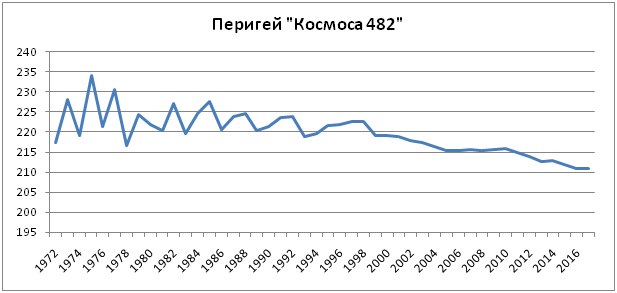
The peaks are clearly related to errors in determining the orbit. It is also clear that somewhere at the beginning of our century, NORAD clearly updated its equipment, increasing accuracy. If at the beginning of the 70s the error in determining the orbit was about 10 km, now it is already less than a kilometer.
But, the perigee, though declining, but slowly enough. In recent years, it can be estimated at 1 km per year. Decrease in apogee more noticeably
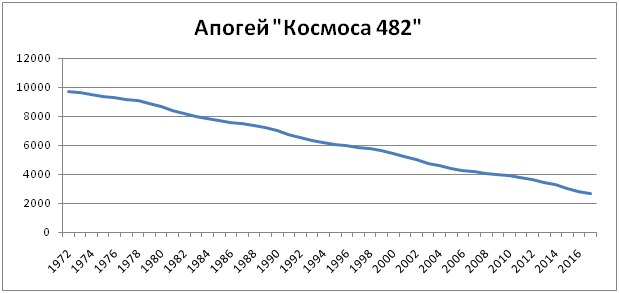
Over the past 48 years, the station has lost about 7,400 km, reducing its apogee from 9,800 km to 2,400
. Waves are clearly visible on the station's fall graph. They will be even more noticeable if you build a dependency not on the height of the apogee, but on how much the station lost every year.
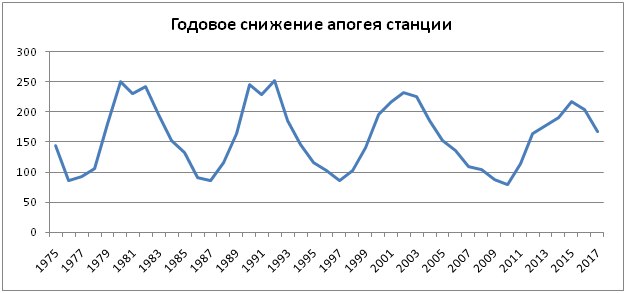
Hello, 11 year cycle of solar activity !
An increase and a decrease in the activity of the Sun noticeably affect the atmosphere, and hence the lifetime of the station. At the maximum of solar activity, the atmosphere, roughly speaking, “swells”, the station flies through its more dense layers and decelerated faster. With a minimum of solar activity, respectively, the opposite.
So when will the station return to Earth? If we average the data taking into account solar activity, the graph above looks close to a straight line. For 10 years, the station lost about 1,500 km at the apogee. But very soon it will change.
When approaching the Earth at the station, the orbital period decreases, it more and more enters the atmosphere during the passage of the perigee, which causes a more rapid fall of the apogee.
This is best shown by the example of some other satellite. For example, Sputnik-3 launched on May 5, 1958. Initially, the second stage of the "seven" put it into orbit 220x1840 km. The initial apogee was only 600 km below the current orbit of Cosmos-482. But in this orbit, he lasted less than two years. Entering the atmosphere in April 1960.
Unfortunately, TLEs in the early orbits of Sputnik-3 are not in the database. Just because even the official creation date of NORAD (May 12, 1958) is later than its launch. And deployed the system to a regular position even later. The permanent publication of the parameters of its orbit begins only from July 1959. But this is more than enough. Here, apogee timeline
Figures from below mean year and month.
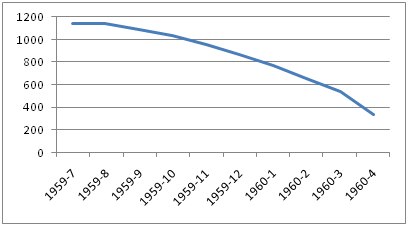
Now the speed of the loss of apogee
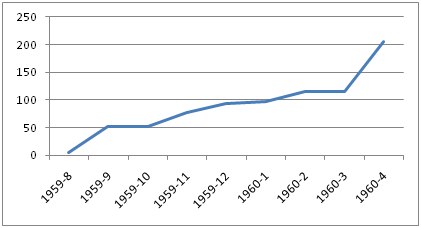
It can be seen as the falling speed increases. From 4 km / month in August 1959, to 200 km / month in April 1960. For example, the parameters of the Sputnik-3 orbit in recent months were 181x541 km on February 28 and 165x365 km on March 30, 1960. On April 6, 1960, Sputnik-3 had already entered the dense layers of the atmosphere and burned down.
Unfortunately, this data can only be used for preliminary estimates. Sputnik-3 had a different shape compared to Cosmos-482 and a different mass. It is very important. For example, the second stage, 8К71, which put Sputnik-3 into orbit, burned down in the atmosphere on December 4, 1958. Though it was heavier than him, it was also much more quickly and braked by the atmosphere.
A similar story with our Venus station. Almost half a century of flight, liquid oxygen and kerosene most likely have already evaporated from the station, the total mass of the bundle is now about 2 tons, which is comparable to the mass of Sputnik-3 in 1327 kg. But its dimensions are much larger and it should be slowed down faster. Also now her perigee is already a little less than that of Sputnik-3, and then it will decline further. This again increases braking. On the other hand, Sputnik-3 fell at the maximum of solar activity, and now it is at least.
In other words, the exact date is very difficult to determine. But you can try to calculate the range. I got this schedule.

In my opinion, the station will return to us in the next 4-7 years.
After that, it will be very interesting to find her descent vehicle. In addition to the obvious historical and archaeological, there is also a scientific interest. The device has not yet returned to the Earth after half a century of being in space. And it is very interesting to see how such a long flight affected the materials in the descent vehicle.
It is so interesting that I even thought that it would be useful to launch the Federation to it, if it already starts flight tests when the station comes closer to Earth. Astronauts could, for example, dismantle the solar battery, part of the screen-vacuum insulation from it. And put a small brake motor on the station in order to plant it somewhere in Kazakhstan.
Without this, one can only say that it will sit between 52 degrees north and 52 degrees south latitude.
However, even launching a satellite-inspector to it would be interesting. The benefit of our MO is experiencing similar in recent years. The station has a standard inclination, and there should be no problems with the launch.
In any case, before landing the Soviet station a few more years. Wait and see!
